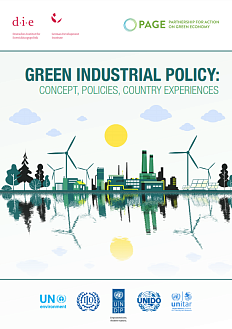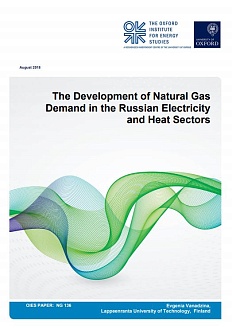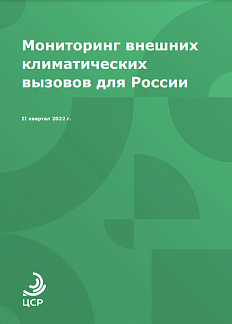The reserves of key natural resources, which provide the need of humanity are diminished every year. The ocean contains most of the minerals that are on land, as well as unique mineral formations not found on the continents. For example, ferromanganese nodules or polymetallic sulphides.
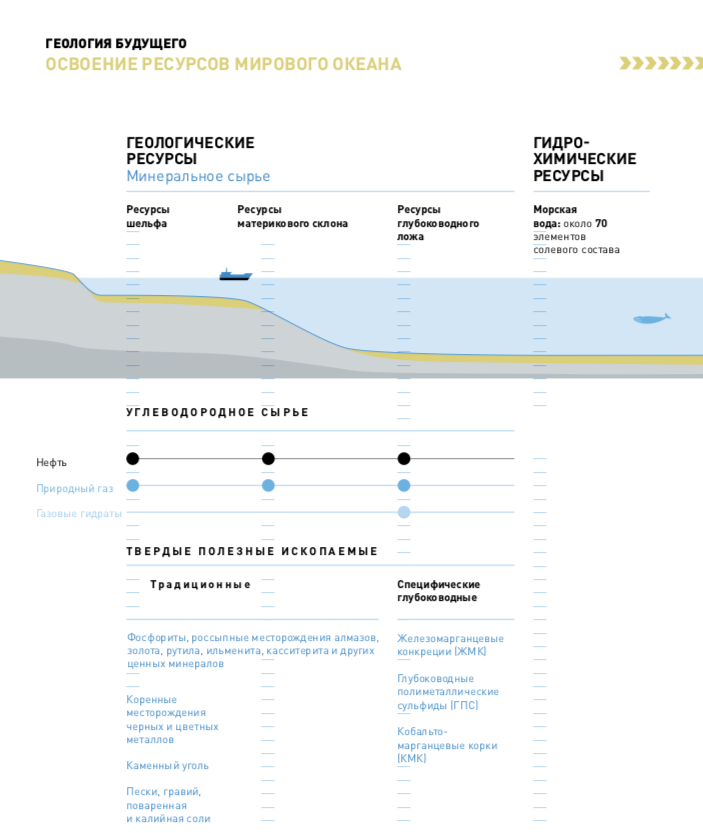
The mineral resources of the World ocean include 5 categories: hydrocarbons, gas hydrates, «traditional» solid minerals, specific deep-sea solid minerals, and more than 70 chemical elements contained in sea water.
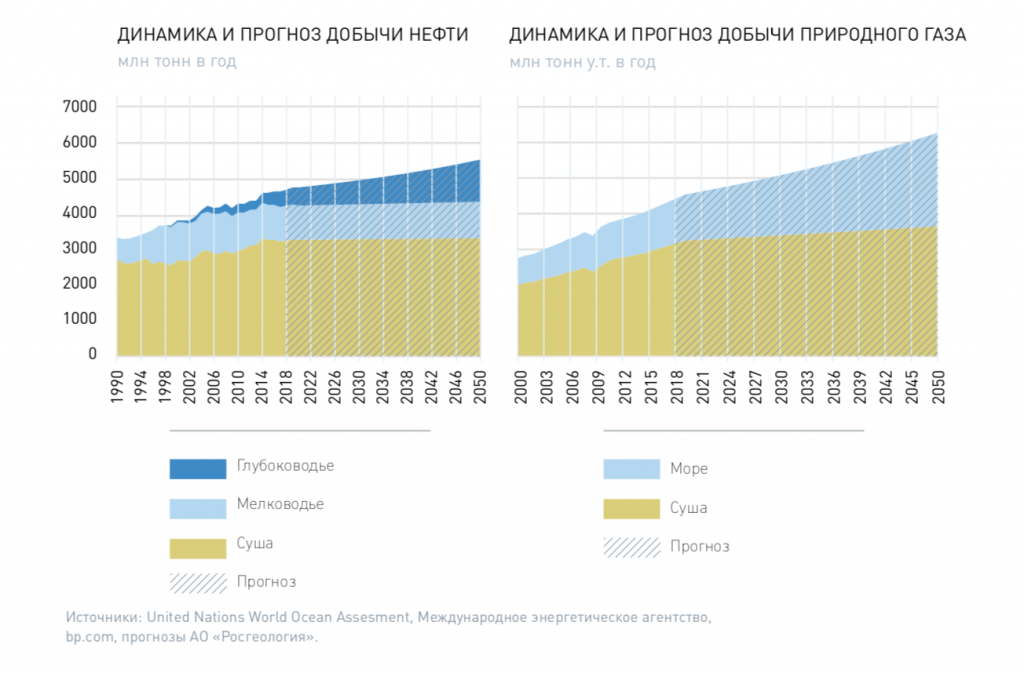
According to various estimates, a part of shelf and deepwater field of hydrocarbon extraction in the world is 3035%. By 2050, this indicator may increase to 4045%, including through the development of the potential of the Arctic shelf and deepwater fields, more than 1,500 meters.
In the near future, fossil fuels will continue to be a major component of the power balance. By 2050, fossil fuels will still be about 75% of the global energy delivery.
The development of new technologies can make cost-effective offshore fields that were previously unprofitable, which boosts the development of marine technology for exploration and production, stimulates technological development of the entire industry associated with development of the shelf, especially technologies providing safe research and development of new sources of hydrocarbons.
Gas hydrates (clathrates) exist at low temperatures and high pressure and, if these conditions are violated, they easily decompose into water and gas. In hydrates the methane content is very high: under standard conditions 164 cubic meters of this gas can be obtained from one cubic meter of gas hydrates.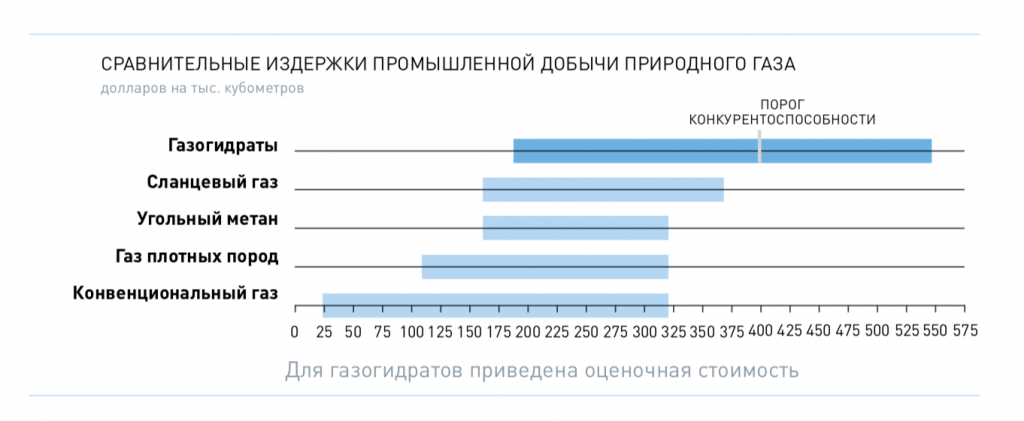
The development of gas hydrate fields is more expensive as the development of traditional natural gas fields due to low returns to scale, the need of natural gas compression, higher cost of well development and use of technologies that are interceptive sand production. Despite the fact that with the accumulation of experience and development of technologies, cost of developing fields of gas hydrates should decrease, not all experts agree that this resource can become competitive.
Environmental concerns associated with the development of gas hydrate fields are associated with the use of inhibitors, namely the risk of environmental contamination caused by accidental release of the inhibitor or spills during production, transportation and use of inhibitor.
The history of the development of shelf fields of «traditional» solid minerals, such as coal, iron oxide, tin, diamonds, nickel, mercury, sulfur, and others, has been around for several decades. Great experience has been accumulated in such countries like the United Kingdom, Japan, Canada, Australia, New Zealand and Turkey.
The part of extraction of «traditional» solid minerals at shelf fields today is 1015% globally, by 2050 this part may increase to 2025%.
Marine traditional solid minerals are an important object of research for the Geology of Future. As a commercial interest are sands and grail, phosphorites, as well as coastal placer accumulation of diamonds, tinstone tin, ilmenite and rutile titanium, gold, and other metals.Underwater production is carried out by surface (floating mines and dredgers) and underground (mine workings and boreholes) mining methods.
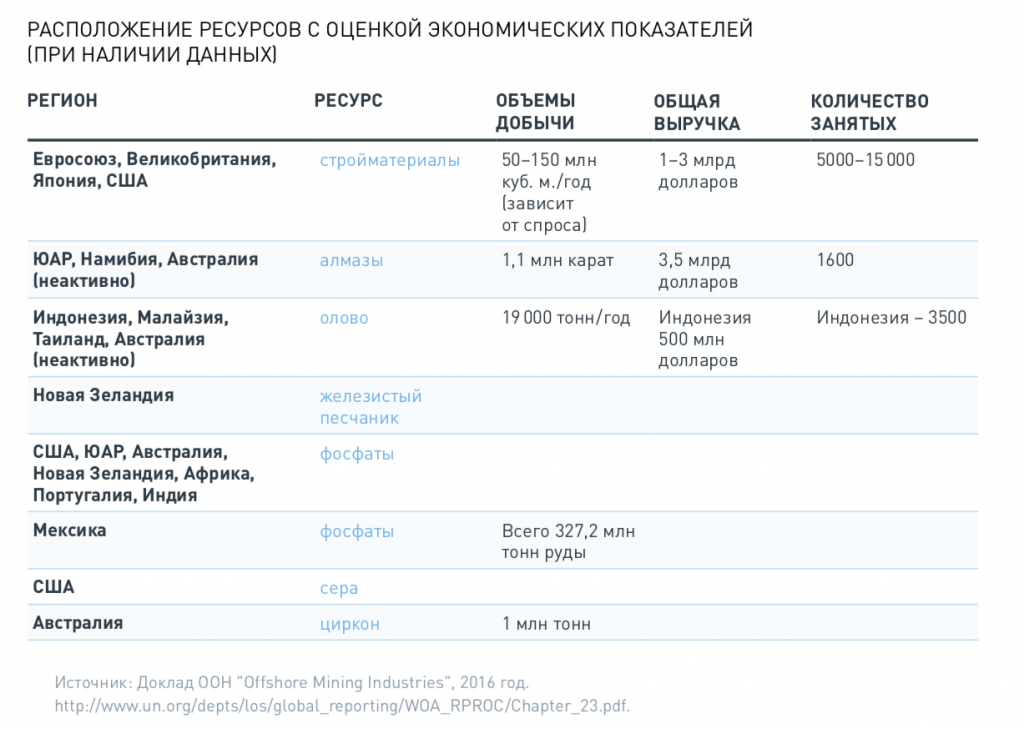
The demand growth for metals from various industrial sectors provides a significant boost to the market for off-shore mining. The expansion of use of commodities and nanoparticles of metals, especially nickel, gold and platinum in several industrial segments, including printing inks, catalysts and medical diagnostic agents, creates a high need for the extraction of such metals. On top of this, the increasing needs of the agro-industrial sector of the world economy in phosphorus-based artificial fertilizers which impacts the increase of phosphate mining. The continental shelf resources of commercial interest also include ferruginous sandstones rich in titanomagnetite and calciferous feldspars for steel production, as well as phosphorites.
Environmental impact includes physical changes both in the benthic environment and underwater cultural heritage. Firstly, the bedding plane gets removed which leads to the disappearance of the benthic colonies (plankton). According to a large body of researches, 30‒70% of cell material (in some cases 95%) are destroyed as a result of mining operations with excavation system usage. In addition, interfering with the bedding plane reduces the amount of sunlight availability needed for phytoplankton photosynthesis. High tides and streams spread used chemicals which lead to the ocean pollution not only in the mining zone The environmental footprint depends on the mining method, its intensity and also on the bedding plane composition as well as on the local water hydrodynamics.
There are vast amounts of mineral interests concentrated at the bottom of the abyssal areas of the Worlds water. The potential of their development still is not completely disclosed. It is possible that the ocean bed contains the most of those minerals that are on land. On top of that, there are mineral formations found in the abyssal areas those which can be met only in the Worlds Water: the ferromanganese nodules (FMN), the abyssal polymetalic sulphides (deep sea polymetallic sulphides) and cobaltic-manganese rinds.
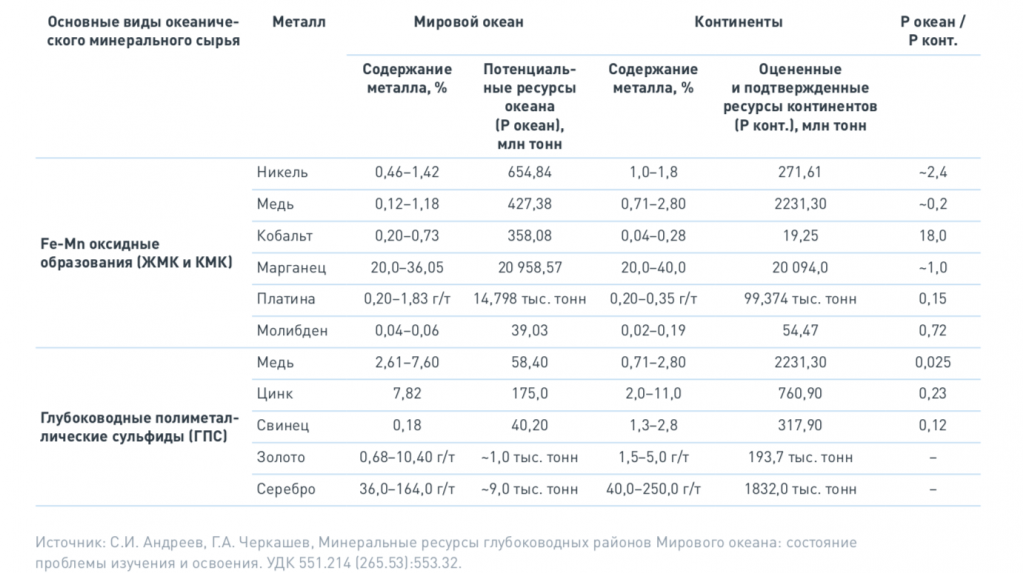
The mining of specific abyssal mineral products is a very complicated task due to the extreme conditions of the ocean depths, yet based on the modern evaluations of deposits size, situation and formation of the abyssal products, anticipated costs both capital and operating and also on the cost on metals, some experts conclude that the commercial efficiency of the deep sea polymethallic sulphides mining is higher in comparison go the FMN and Cobaltic-manganese rinds projects.
The environmental damage caused by the specific abyssal minerals production mining yet cannot be evaluated completely. Scientists have just begun to describe the possible impacts, so that regulatory bodies and the society could understand the consequences of new industrial activity in the Worlds water better. Some scientists believe that the development of the abyssal mineral products should be preceded by a large amount of research for the next 1015 years.
An important component of the resources of the Worlds Water is sea water which contains elements of salt composition that can be used for economic needs. Ocean water is used both to provide the population with fresh water through desalination technologies, and to produce useful chemical elements and compounds (hydrochemical resources).
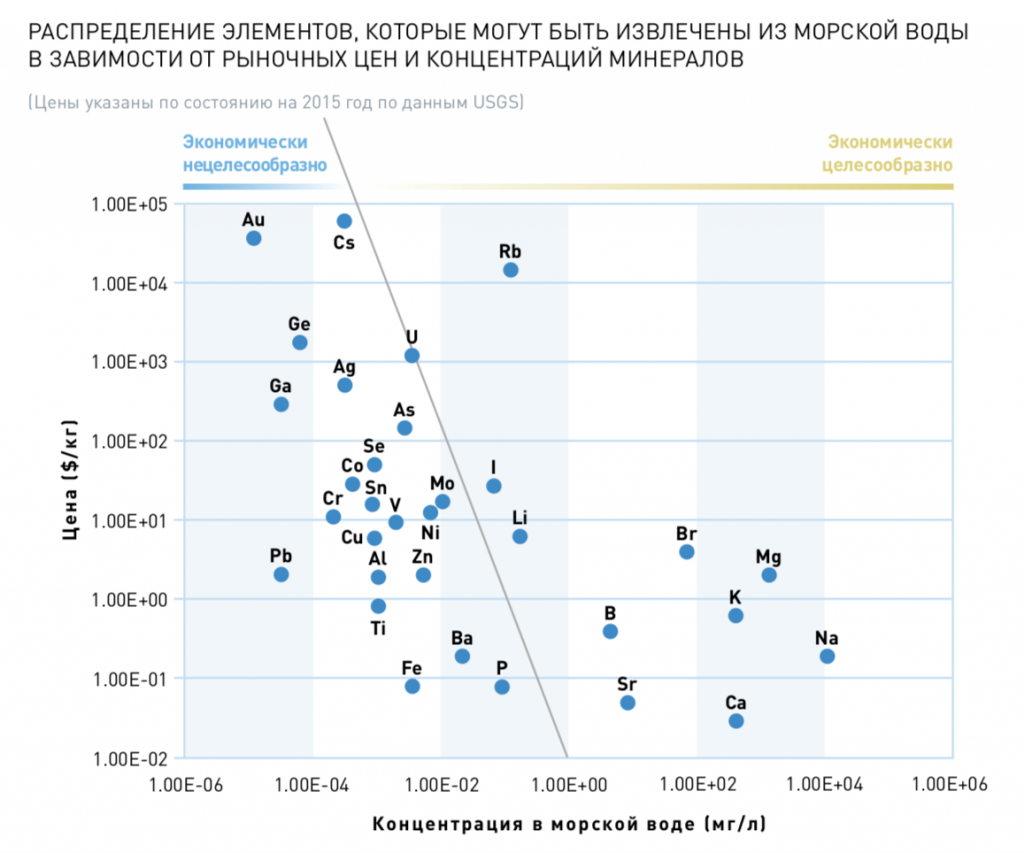
According to the present-day evaluations, the waters of the Worlds water contain more than 70 chemical elements. The compounds of chlorine, sodium, magnesium, sulfur and calcium prevail the most in the oceanosphere. On top of this as a result of the salt water enormous volume the combined mass of the elements with lower density (aurum, argentum) is quite potent.
In the following decades it is expected that a combination of progress in supramolecular chemistry, bifurcation theory, material chemistry, nano-biotechnology, technological engineering and scalable production will lead to the qualitative progress needed to create, optimize and operate the salt water recycling plant of the future.
According to some estimates, in 2030 the world volume of water desalination will increase to 120 billion tons per year and will continue to increase further. The economic profit obtained from the extraction of minerals depends on the concentration of these minerals in sea water and their market value.
Emissions of water with a modified molecular composition can have a significant impact on the ecological balance in the marine environment. Also, the significant environmental impact of most desalination plants is the emission of greenhouse gases from the generation of energy consumed.



